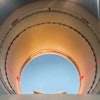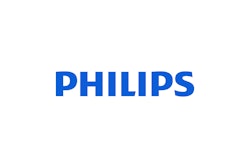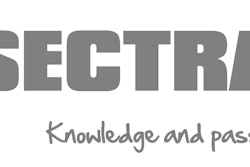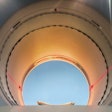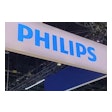CHICAGO - A new family of clinical information technology products and services, called Vequion, is the major focus of Philips Medical Systems at this week’s RSNA meeting. Other Philips highlights include a new mid-range ultrasound scanner, a 10-slice CT system, and an MRI system optimized for radiation therapy planning.
Vequion provides a platform for a consistent user interface and multipurpose clinical software applications for the vendor's imaging modalities and PACS line, said Jos Bakker, senior director, strategic marketing and business development.
The first product in the Vequion family, ViewForum, allows users to set up a multimodality workstation environment. As a result, images from different modalities can be viewed in every modality room, he said. In addition, the Windows XP-based workstation can be personalized to fit the application, and can automatically perform 3-D processing functions such as multiplanar reformatting (MPR) and maximum intensity projections (MIPs), Bakker said.
A work-in-progress option, ViewForum Pro, provides real-time 3-D volume rendering with direct manipulation. Philips is displaying its Vequion concept in the modality sections of the booth.
In other PACS developments, Philips debuted Diamond 2, an archive that combines RAID and long-term tape storage for cardiology and radiology applications. Philips has also integrated Lanier's digital dictation software into its EasyVision Dx workstation software, said Eric Mahler, marketing manager for Inturis for Radiology.
In addition, Philips touted document scanning capability included on the firm's EasyVision RG quality assurance workstation. The vendor also showed a wireless tablet offering developed by Philips Electronics, which creates a portable workstation environment. Release is expected in the second half of 2003.
Philips is now also distributing displays from WIDE as well as Dome, Mahler said. In other Philips PACS developments, the company has signed a new, five-year contract with longtime PACS partner Sectra-Imtec of Linkoping, Sweden. Sectra will continue to contribute PACS technology for use by Philips.
In ultrasound, Philips is placing the spotlight on EnVisor, a mid-range multispecialty system with a price point of under $100,000. EnVisor, which includes technology contributed by the vendor's HDI and Sonos platforms, features trapezoidal, color-flow, adaptive Doppler, color Doppler, color power angiography, directional color power angiography, tissue Doppler imaging, M-mode, pulsed Doppler, dual-image, triplex, 2-D, and 3-D imaging, and an advanced stress-echo option.
EnVisor also includes an "intelligent" Doppler function, which automatically adjusts to a specified scanning angle as the user adjusts for flow direction. The system has a fully articulating keyboard and monitor, as well as a control panel that moves up and down.
Additionally, the product has integrated image- and data-management capabilities for reviewing, storing, and sharing patient study information. Images and reports can be archived via a DICOM-compatible network or through various removable media, including CD-RW.
EnVisor comes in two configurations. The base system includes a 256-channel beamformer, while EnVisor HD offers 512 channels. HD also includes additional features such as parallel processing and panoramic imaging.
EnVisor customers can upgrade to the HD model, said Radjen Ganpat, sales development manager, Europe, Middle East, and Africa. EnVisor HD will cost approximately $20,000 to $30,000 more than EnVisor, but will remain under $100,000, said Laura Bridenback, senior market manager, specialty ultrasound solutions. The scanners will begin shipping in January.
Philips also pointed attendees to HDI 5000, which has received a complete redesign. Enhancements include improved ergonomic tools such as a fully articulating monitor and an integrated foot rest and palm rest for the sonographer, said Victor Reddick, senior vice president and general manager, global general imaging.
A re-engineered computing architecture provides increased processing power, while the vendor's XRES technology reduces image artifacts, refines tissue textures, and sharpens structural detail, the firm said. The inclusion of the company's SonoCT imaging technology combines up to nine lines of sight to provide real-time spatial compound imaging, Reddick said.
HDI 5000, which has a price range from the low $100,000 range to $300,000 for a fully-featured radiology unit, is available now. Philips is also now marketing packages of ergonomic features for its customers, Reddick said.
New 10-slice CT
In the CT section of the company's booth, a new 10-slice CT scanner is a highlight. The Mx8000 IDT 10 scanner creates a new price point in the company's product line, below the 16-slice version of the Mx8000 system. Mx8000 IDT 10 will carry a list price 15%-20% lower than the 16-slice system.
Philips is emphasizing the Tach technology found in all the Mx8000 IDT scanners. Tach consists of an application-specific integrated circuit (ASIC) on the detector module to handle data processing. The chip gives Mx8000 the computer horsepower needed to do true cone-beam data reconstruction, according to Jim Green, general manger of the company's CT business.
Philips is also discussing its DoseWise radiation dose reduction protocol, IntelliBeam x-ray beam filtration system, and CT applications in cardiac, orthopedic, and neuro imaging. Philips is also developing its own computer-aided detection (CAD) software at the Philips Research Center in Hamburg, Germany. Early tests of the work-in-progress software show that it has a sensitivity of 95% and a low false-positive rate. The software has been installed at several beta sites.
In MRI, Philips has completed the integration of the product line from Marconi Medical Systems, which Philips bought in 2001. The Marconi scanners – the Panorama and Infinion product lines – have received new exterior designs that match those of Philips' Intera systems.
Two new scanners are the Panorama 0.23T I/T and Panorama 0.23T R/T. Both are 0.23-tesla magnets, with the I/T optimized for MR-guided interventional work and R/T focusing on radiation therapy planning (RTP). The R/T system was displayed next to a bridge assembly that houses the lasers used for RTP studies. Philips believes the scanner is the first MRI system optimized for RTP, and will prove useful for planning radiation therapy delivery to soft-tissue areas such as the prostate, and brain, head and neck tumors, according to Terri Wimms, director of oncology CT marketing in the company's radiation oncology business.
The company's flagship Intera MRI line has received a makeover. Philips has completed work on adding a whole-body capability to the Intera 3.0T 3-tesla system after showing whole-body scanning as a work-in-progress at last year's meeting. Whole-body protocols will prove especially useful for MR angiography, according to Guido Stomp, global field marketing director for MR.
Philips has also improved on its SENSE parallel imaging technique. Stomp said the new version has six times the performance of the previous iteration, and users can either improve resolution or speed, depending on their preference. The technique is particularly useful at 3-tesla, enabling users to compensate for artifacts created by imaging at such high field strengths, such as the high specific absorption rate of tissue.
Philips announced the signing of a deal with the University of Nottingham in the U.K. for the development of a 7-tesla MRI scanner for research purposes. Installation is planned for 2004, and the company hopes to sign several more similar deals.
Finally, Philips is launching new Galaxy gradients for the high-field scanners in the Intera product line. The gradients have higher amplitudes and slew rates, with peak amplitude of 66 millitesla/meter and a top slew rate of 160 mtesla/m/msec. Image reconstruction at a rate of 860 images a second is now possible.
On the nuclear medicine side, Philips' Gemini hybrid PET/CT system is moving closer to market, with the first beta site scheduled for installation in the first quarter. Philips is highlighting the open design of the system, which features a gap between the CT and PET modules.
For the Allegro dedicated PET camera, Philips is planning a new version of the system in the first quarter that will reduce scanning times by 25%-30% and improve image quality, as well as incorporate a new table design. Some 40 Allegro systems have been installed since the system began shipping a year ago, according to Deepak Malhotra, senior director of PET marketing. Syntegra image-fusion software is also being highlighted.
On the SPECT side, Philips is highlighting the success of its novel SkyLight gamma camera, which mounts detectors on ceiling rails rather than in a floor-mounted gantry. Over 100 SkyLights have been installed to date, and Philips is shipping 25 systems a quarter, giving the product a 10% share of the U.S. market. New software for the camera is being released, with a focus on optimizing workflow, according to Josh Gurewitz, vice president of marketing for nuclear medicine and PET.
Other Philips SPECT highlights include the CardioMD dedicated 90º cardiac camera, which is targeted at cardiology offices, and recent papers validating the utility of Vantage attenuation correction for the Forte, Cardio60, and Vertex gamma cameras, Gurewitz said. Meanwhile, the company's ENsphere workstation demonstrated the application of the Vequion concept to nuclear medicine.
In the x-ray realm, MultiDiagnost Eleva is a new universal radiography/fluoroscopy system being rolled out at the RSNA meeting. The system enables exam- and patient-related presets to be programmed according to user preference, and also incorporates Philips features like its 180º isocentric C-arm rotation and DoseWise dose-reduction protocol.
Philips has made enhancements to its Integris Allura 3D-RA rotational angiography system, such as work-in-progress techniques for coronary plaque imaging, vertebroplasty image guidance, and high-resolution imaging at 16 microns. The speed of the new release is a major selling point, with 4-second acquisition times and 45-second reconstructions, according to John Steidley, vice president of cardiovascular x-ray.
Also a focus is a work-in-progress flat-panel detector for vascular applications that Philips hopes to make available in a year as an upgrade for Allura. The panel will feature a 12 x 16-inch rectangular field of view, which will be useful for spine and single leg imaging, Steidley said.
Philips is also discussing the transition to digital for its traditional radiography product line. The DigitalDiagnost TH flat-panel system has been outfitted with a new rolling wall stand that slides along the floor, giving users additional positioning flexibility, according to Timothy Stevener, director of the company's radiology business unit. Meanwhile, the new DigitalDiagnost VR system has a new gurney on which patients can be imaged without creating artifacts found on traditional gurneys.
By Erik L. Ridley and Brian Casey
AuntMinnie.com staff writers
December 3, 2002
Copyright © 2002 AuntMinnie.com



